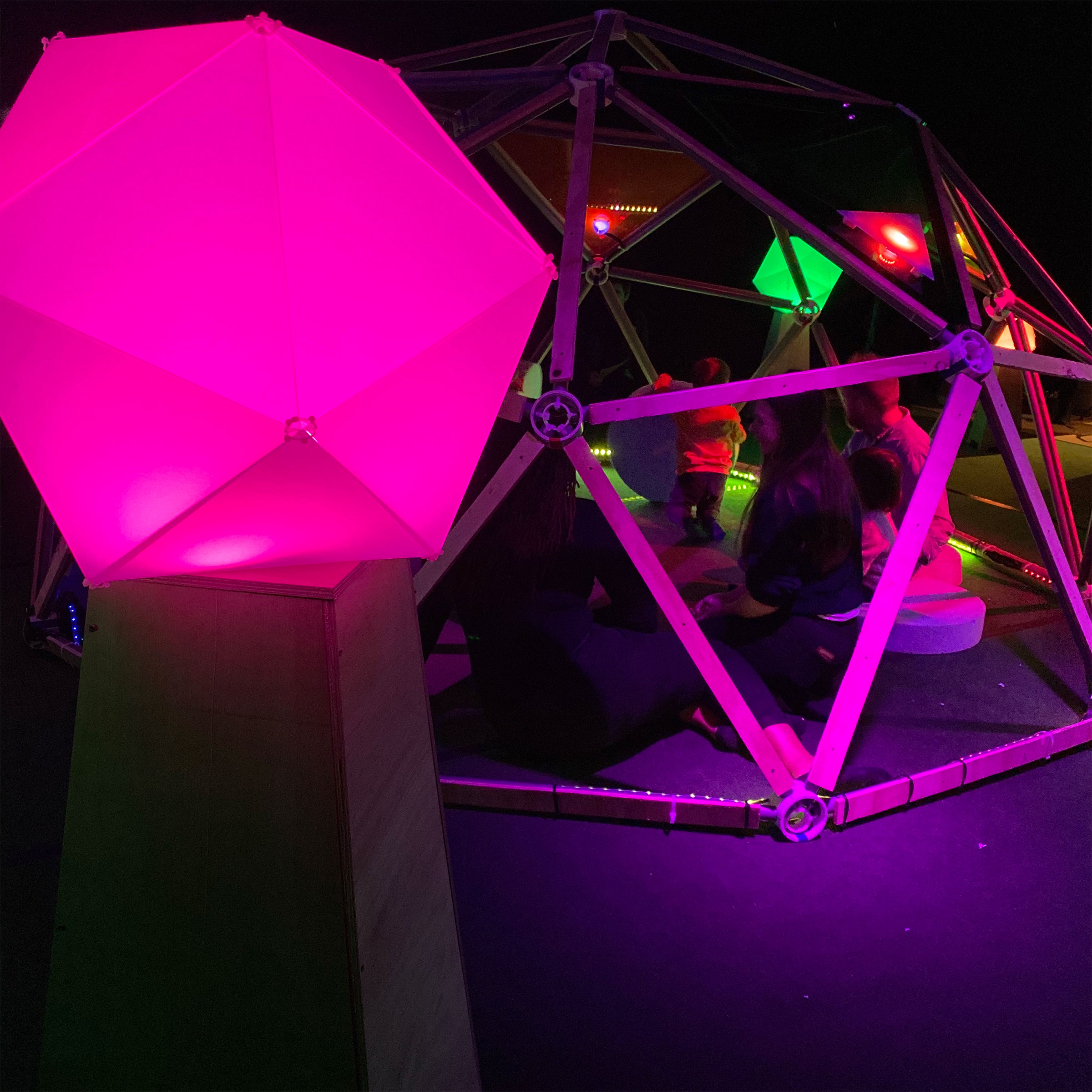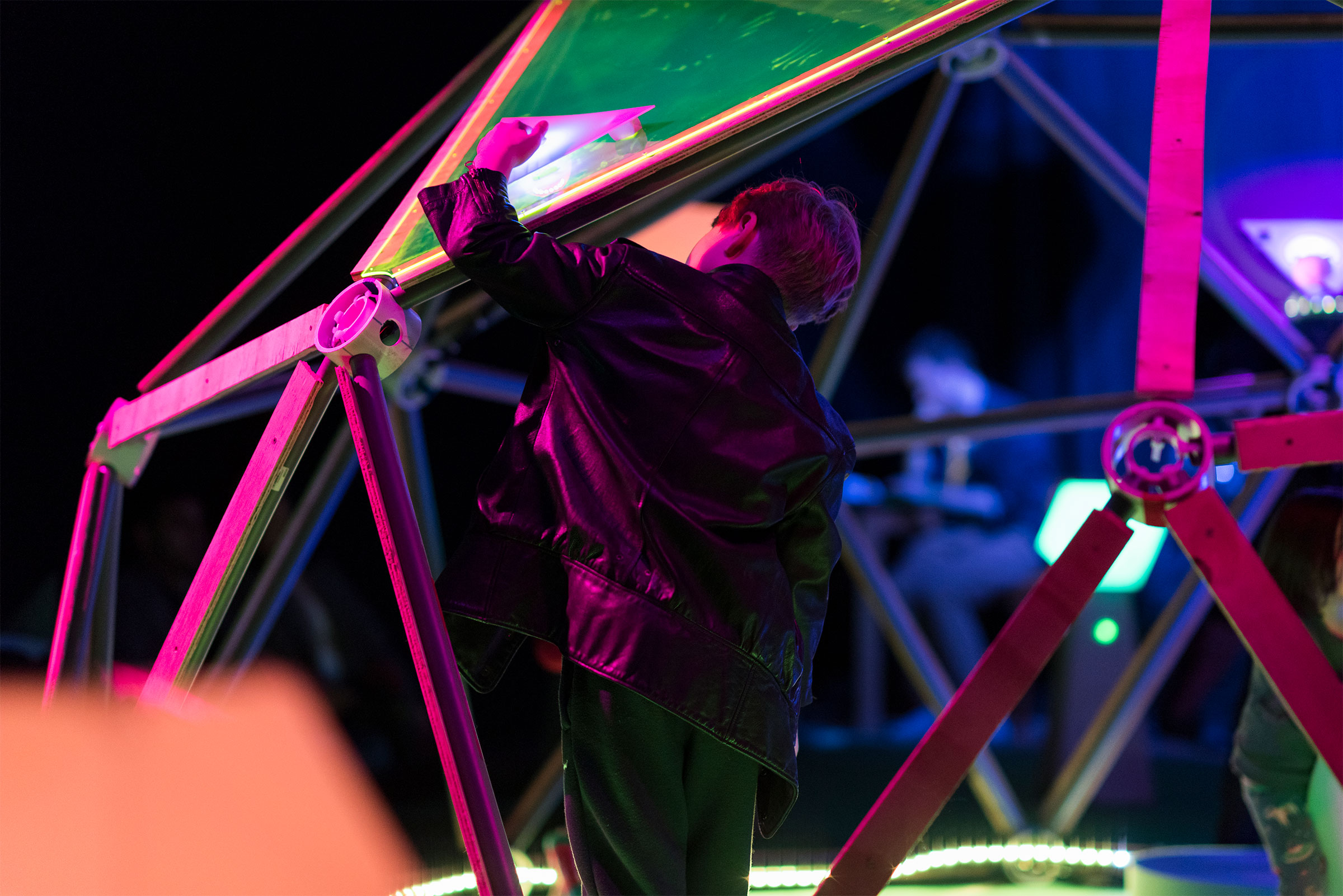Forest Daydream
Forest Daydream is a large-scale interactive and immersive installation measuring 7 meters by 9 meters. It was developed by Phoenix Perry, Federico Fasce, Ben Kelly, Robin Baumgarten, Matt Jarvis, and Adelle Lin at the Creative Computing Institute, University of the Arts London. The project also involved participation from students in the MSc in Creative Computing program at UAL in 2019.
Forest Daydream creates a dynamic woodland atmosphere that explores the soundscape of the endangered ecology of the Amazon rainforest. Participants are encouraged to interact with the forest. An illuminated, interactive geodesic dome invites players inside in the centre of the room. Surrounding the dome, trees populate the space and serve as interactive interfaces for mini-games. Inspired by 1970s folk games, the play occurs throughout the forest and emphasizes cooperation among players to promote social well-being. These experiences are unbound by time, allowing for focused play and open-ended, freeform exploration.
Players navigate a physically reproduced video game environment, working together to engage in small games hidden within the landscape. Upon completing each mini-game, players can alter the time of day and the weather around them. The soundscape combines familiar game sounds with field recordings from the Amazonas region of Peru, home to the ancient community of the Wampís, who maintain a cultural obligation to keep the forest in balance with all living things.
This project empowers participants through exploration and collaboration while raising awareness about the impact of our actions on the environment during play. The music composition by Ben Kelly was recorded in partnership with the Wampís in the Amazon rainforest. Kelly's sound work highlights the effects of globalization on the Wampís' indigenous culture and their environment.
Debut: Permission to Play, Wellcome Collection, London, UK, February 2020.
Kelly was the first to record their songs and their forests' acoustic ecology. In contrast, this installation's fabricated forest made from processed materials such as PVC pipe and plywood arouses an intrinsic appreciation of nature while reflexively examining the cost of everyday first-world-building materials in the global south. This beautiful, tragic hypocrisy of materiality subtly mediates our landscapes' conflicting forces at work. The collision and overlapping of these spaces provoke consideration. What ecologies are being lost and gained as technology impacts our ecosystem? Given the resources required by cloud-based massive multiplayer online games, this work softly poses urgent questions of how and where we play and at whose expense?























